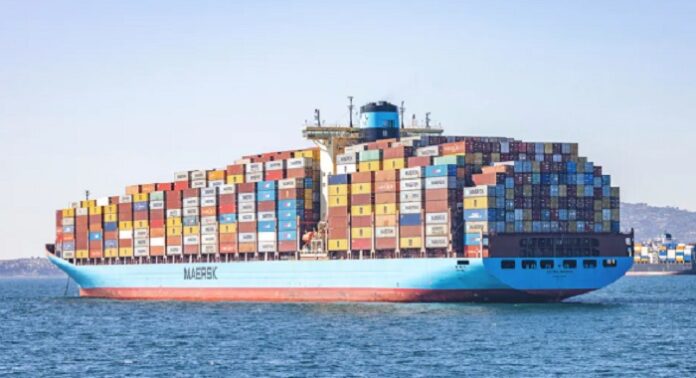
-
Maersk delivers record Q3 2022 results with revenue of US$22.8 billion, EBITDA of $10.9 billion and EBIT of $9.5 billion, mainly driven by ocean freight rates
-
The group says the party is over as freight rates have peaked and are returning to normal levels on soft demand and easing supply chain congestion
-
Maersk confirms its full-year guidance for underlying EBITDA of about $37 billion, underlying EBIT of about $31 billion and a free cash flow above $24 billion
After posting record US$23 billion revenue that was up 37% year-on-year and net profit that surged about 60% y-o-y from its ocean, logistics & services, and terminal operations due to high rates, A.P. Moller-Maersk signaled on November 2 the party’s over for ocean liners.
Maersk chief executive Soren Skou said the third-quarter results broke records and it was the 16th quarter in a row of year-on-year earnings growth driven by ocean freight rates.
Revenue reached US$22.8 billion, EBITDA climbed to $10.9 billion and EBIT surged to $9.5 billion in Q3 2022, mainly driven by continued momentum in the strategic transformation, growth in logistics, and ocean contract rates above the previous year.
Net profit was $8.9 billion for Q3 and $24.2 billion for the first nine months. Return on invested capital was at 66.6% for the past 12 months.
These exemplary results were a continuation of Maersk’s strong second-quarter results, when its revenue surged 52% to US$21.7 billion and net profit more than doubled to US$8.6 billion. Its first-half net was US$15.4 billion.
“Ocean freight rates, which have driven the exceptional results we have delivered in 2022, were again up both year-on-year and compared with the second quarter,” Sekou said.
“However, it is clear that freight rates have peaked and started to normalize during the quarter, driven by both decreasing demand and easing of supply chain congestion. As anticipated all year, earnings in ocean will come down in the coming periods.”
He said for the first time, revenue in logistics exceeded $4 billion in a quarter and that the segment should continue to outgrow the market in logistics based on new customer wins.
Skou said with the war in Ukraine, Europe’s energy crisis, high inflation, and a looming global recession, there are plenty of dark clouds on the horizon that weigh on consumer purchasing power that, in turn, impacts global transportation and logistics demand.
Expecting that a global economic slowdown will lead to softer container shipping business, Skou said Maersk will continue to pursue the growth opportunities in logistics and is ready to support customers in rethinking their supply chain needs through a more volatile business environment.
Ocean revenue rose to $18 billion and EBIT to $8.7 billion, mainly driven by significantly higher contract rates and shipment on routes from Asia to Europe and North America. This was partly offset by a drop in volumes and higher fuel and costs, container handling and network.
In logistics & services, Maersk completed its acquisition of LF Logistics and announced a buyout plan for Martin Bencher Group. It also grew its warehouse, distribution center and cold storage assets with 21 facilities across Latin America, Europe and India. Logistics revenue grew 60% to $4.2 billion and EBIT to $258 million mainly on acquisitions and higher volumes.
Terminals revenue grew to $1.1 billion and EBIT rose to $357 million, mainly on higher volumes and prices and Maersk’s divestment from Global Ports Investments in Russia.
Maersk has confirmed its full-year guidance for underlying EBITDA of around $37 billion, an underlying EBIT of about $31 billion and a free cash flow above $24 billion.
With the economic slowdown expected to drag into 2023, APMM cut its 2022 global container demand growth outlook to a 2-4% decline from the previously lower end of the +1-/1% range. Capex guidance for 2022-2023 remains at $9-10 billion.




